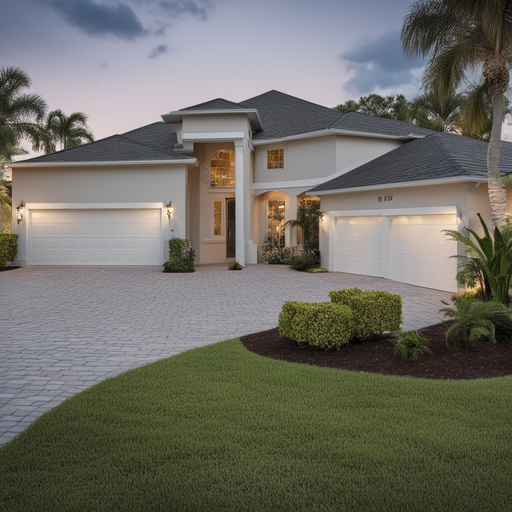Why Proper Roof Ventilation is Essential for Your FL Home
Living in beautiful Cape Coral, FL has its perks – sunny weather, stunning beaches, and a laid-back lifestyle. However, as a homeowner in this tropical climate, you must also be aware of the importance of roof ventilation for your property’s longevity and comfort. In this blog post, we will explore the significance of roof ventilation and provide valuable insights to help you make informed decisions.
The Impacts Explained
Roof ventilation plays a vital role in maintaining a healthy and comfortable living environment. It helps regulate the temperature inside your home, preventing heat buildup in the summer and reducing moisture during the humid months. By allowing proper airflow, roof ventilation can minimize the risk of mold growth, preserve the integrity of the roofing materials, and even contribute to energy efficiency.
1. Improved Energy Efficiency: Proper roof ventilation allows hot air to escape, reducing the strain on your air conditioning system. This can lead to significant energy savings, as your cooling system will not have to work as hard to maintain a comfortable temperature inside your home.
2. Prevention of Moisture Damage: Excessive moisture can wreak havoc on your home, leading to rot, mold, and structural issues. Roof ventilation helps remove excess moisture, preventing condensation and protecting your property from potential damage.
3. Prolonged Roof Lifespan: By reducing heat buildup, roof ventilation helps extend the lifespan of your roofing materials. Excessive heat can cause shingles to deteriorate more quickly, resulting in costly repairs or premature replacement. Proper ventilation ensures that your roof stays in optimal condition for years to come.
4. Enhanced Indoor Air Quality: Good ventilation promotes a healthier indoor environment by eliminating stale air, odors, and potential pollutants. It also reduces the risk of respiratory issues caused by mold spores or other allergens that thrive in humid conditions.
5. Comfortable Living Space: Proper roof ventilation ensures a more comfortable living space by regulating temperature and humidity levels. You’ll enjoy a cool and pleasant interior, even during the hottest summer days, allowing you to relax and unwind without relying solely on artificial cooling methods.
Different Types of Roof Ventilation
When it comes to roof ventilation, there are various options to choose from. Let’s take a look at some popular choices:
1. Ridge Vents: These are installed along the ridge of the roof, allowing hot air to escape. Ridge vents work in conjunction with soffit vents to create a natural airflow system.
2. Soffit Vents: These vents are located under the roof’s eaves, allowing cool air to enter the attic or crawl space. Soffit vents work hand in hand with ridge vents to facilitate proper ventilation.
3. Gable Vents: Positioned on the exterior walls near the roof peak, gable vents promote air circulation by creating an exit point for hot air. They can be a great option for homes with specific architectural features.
4. Roof Turbines: Also known as whirlybirds, roof turbines use the wind to remove hot air from the attic. As the wind blows, the turbines rotate, creating a suction effect and expelling stale air.
5. Solar-Powered Roof Vents: These vents harness the power of the sun to increase airflow. They feature solar panels that power the fan, providing continuous ventilation without relying on electricity.
The Importance of Professional Roof Ventilation Installation
While understanding the benefits of roof ventilation is crucial, it’s equally important to entrust the installation to professionals. Here’s why:
1. Proper Placement: Experienced roofing contractors have extensive knowledge of optimal vent placement. They will ensure that vents are strategically positioned to maximize airflow and prevent any damage to your roof’s structure.
2. Expert Installation: Professional roofers have the skills and expertise to install vents correctly. They will ensure that the vents are properly sealed, preventing leaks and minimizing the risk of water infiltration.
3. Compliance with Building Codes: Local building codes may dictate specific requirements when it comes to roof ventilation. Professionals are well-versed in these regulations and will ensure your installation meets all necessary codes.
4. Warranty Protection: Hiring professionals for your roof ventilation installation ensures that any warranties on your roofing materials remain valid. Improper installation can void warranties, leaving you responsible for any future repairs or replacements.
5. Safety First: Roof work can be dangerous, especially for inexperienced individuals. By relying on professionals, you can avoid potential accidents and injuries associated with working at heights.
Maintaining Your Roof Ventilation System
Once you have a properly installed roof ventilation system, it’s important to take steps to maintain its effectiveness. Here are some tips to keep in mind:
1. Clear Obstructions: Regularly inspect your vents and ensure they are free from any debris, such as leaves, dirt, or insect nests. Clearing obstructions allows for uninterrupted airflow.
2. Check for Damage: Monitor the condition of your vents and look for any signs of damage, such as cracks or loose parts. Addressing these issues promptly will ensure that your ventilation system continues to function optimally.
3. Schedule Professional Inspections: Regular roof inspections by professionals can help identify any potential issues with your ventilation system. They can provide maintenance recommendations and address any concerns before they escalate into significant problems.


